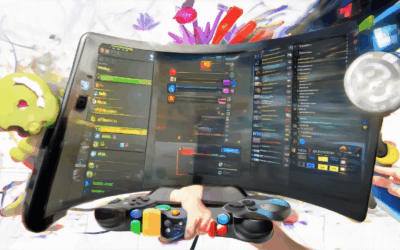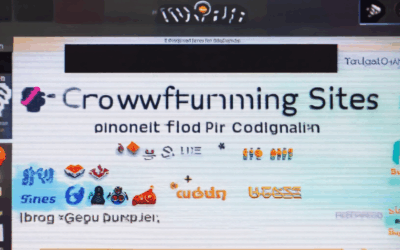Localization is a critical factor in the success of independent video games, offering indie developers the opportunity to expand their reach and connect with global audiences. As the gaming industry continues to grow, competition intensifies, making it essential for creators to tailor their content to diverse markets. Whether you’re working on a niche open-world exploration game or a single-player narrative-driven experience, understanding how to localize your indie game can mean the difference between regional popularity and worldwide recognition. This comprehensive guide delves into the complexities of localization, exploring everything from technical considerations to cultural nuances, and provides actionable insights for developers aiming to break into global markets. By addressing key considerations, challenges, and best practices, this article equips you with the knowledge needed to make informed decisions about your game’s localization strategy, ensuring your work resonates with players across the globe.

How to Localize Your Game
- Conduct Market Research
Begin by thoroughly researching your target markets. Understand the cultural, linguistic, and regional differences that will impact your game’s localization strategy. Tools like surveys, focus groups, and beta testing can provide valuable insights into player preferences and expectations. - Hire Native Speakers or Localization Experts
Collaborate with native speakers or professional localization companies who understand the target language and culture. Their expertise ensures that translations are accurate and culturally appropriate. - Translate Core Assets
Translate all text, audio, and visual elements of your game. This includes user interfaces, tooltips, characters, and narratives. Ensure that terminology aligns with common local expressions and avoids potential misunderstandings. - Adapt Cultural Elements
Modify game mechanics, characters, and symbols to resonate with the target culture. For example, adjust in-game gestures or symbols that may have different connotations in another region. - Test and Iterate
Conduct extensive playtesting with localized versions to gather feedback. Make adjustments based on player reactions and ensure the game feels natural and enjoyable in the target language and culture. - Prepare for Launch
Create regional-specific marketing materials and establish partnerships with local influencers or media outlets. Attend industry events and participate in local gaming communities to build awareness. - Monitor and Update
After release, continuously monitor player feedback and engagement. Be prepared to update translations, content, and features based on player needs and cultural shifts.
By following these steps, you can create a localized version of your game that truly resonates with players around the world.
Most Popular Programming Languages for Indie Game Development
Indie game developers often choose specific programming languages based on their project requirements, performance needs, and personal preferences. Here are some of the most commonly used languages in indie game development:
- C# : Widely used with Unity, C# offers a powerful and intuitive syntax, making it ideal for creating complex games with high performance demands.
- C++ : Known for its low-level control and efficiency, C++ is preferred for custom game engines or when precise performance optimization is necessary.
- JavaScript/TypeScript : Used extensively with frameworks like Three.js, JavaScript and TypeScript are great for creating web-based games due to their ease of use and extensive library support.
- Python : Python’s simplicity and extensive libraries (like Pygame) make it a popular choice for rapid prototyping and smaller-scale indie games.
- Java : While less common in indie circles, Java remains a viable option for cross-platform games due to its robust standard library and performance capabilities.
Each of these languages has unique advantages, whether it’s for performance, ease of use, or flexibility in game design. Developers often experiment with multiple languages to find the best fit for their specific project needs.
For more resources and insights into indie game development, visit Indie Dev Games , a comprehensive hub offering tutorials, reviews, and tips tailored for independent game creators.

Should I localize my game?
Yes, you should consider localizing your game to maximize its global reach and appeal. Localization involves translating the game into different languages and adapting it to suit various cultural contexts. Here are the key reasons why you should localize your game:
- Expand Global Reach : By localizing your game, you can access markets in multiple countries. Players who speak different languages will be able to enjoy your game without needing to learn a foreign language.
- Increase Sales : Localized versions of games often perform better in specific regions. Players in countries where your game is localized are more likely to purchase the game due to better accessibility and cultural relevance.
- Improve User Experience : Localization goes beyond just translating text. It includes adapting visual elements, such as colors, icons, and sound effects, to ensure they are culturally appropriate and intuitive for players in different regions.
- Regional Payment Preferences : Localized store pages can display payment methods and purchasing options relevant to each region, making it easier for players to buy the game.
- Competitive Advantage : Many successful games in your genre may already be localized. Standing out by localizing your game can attract a unique audience looking for games in their native language.
- Cultural Resonance : A well-localized game feels more personalized and culturally relevant, leading to higher engagement and satisfaction among players.
- Cross-Promotion Opportunities : Partnering with local media and influencers becomes easier with a localized version, as they can more effectively promote the game to their audience.
- Visibility on Digital Platforms : Platforms like Steam benefit from localized content, as players searching in their own language are more likely to find your game, driving organic traffic and sales.
While localization may involve costs, the increased reach and engagement often justify the investment. Consider using tools that can automate localization processes and collaborating with translation services specialized in gaming to ensure accuracy and cultural appropriateness. Balancing localization with globalization ensures your game appeals to a broad audience without losing its unique essence.

Example of Game Localization
Game localization involves translating and adapting video games from their original language to suit the cultural preferences and linguistic capabilities of players in different regions. Here are some notable examples:
- The Great Ace Attorney Series : Developed by Capcom, this series was initially released in Japan. Upon international release, Capcom localized the game into multiple languages, including English, French, German, Italian, and Spanish. The localization efforts included not only translation but also cultural adaptation to ensure the story resonated with global audiences.
- Stardew Valley : This popular farming simulation game was localized into over 20 languages. The developers worked closely with localization teams to ensure that cultural nuances were preserved, allowing players worldwide to enjoy the game in their native tongue.
- Minecraft : Available in over 50 languages, Minecraft’s success lies partly in its ability to transcend language barriers through intuitive gameplay mechanics. While the core game remains largely unchanged, localized versions include translated in-game text and voiceover options in various languages.
- Animal Crossing Series : These life simulation games have been localized into numerous languages, with attention paid to regional wildlife names and cultural references. For instance, the Japanese version includes animals like “Tanuki” and “Kappas,” while the American version includes “Raccoons” and “Alligators.”
These examples demonstrate the importance of cultural adaptation in creating engaging experiences for global audiences. Proper localization ensures that players can fully immerse themselves in the game’s world, regardless of their linguistic background.
For more insights into game localization and resources for indie developers, visit Indie Dev Games .
What is an example of a localization strategy?
A localization strategy is a plan to adapt products or services to meet the needs and preferences of customers in specific regions or markets. Here is an example of a localization strategy:
Example: Nintendo’s Localization Strategy
Nintendo has been known for its successful localization strategies, particularly with its video game franchises like Mario, Zelda, and Pokémon. The company understands that each region has unique cultural nuances, and it adapts its products accordingly.
Nintendo’s localization efforts involve:
- Cultural adaptation: Changing game names, storylines, and in-game dialogue to resonate with local audiences.
- Voice casting: Hiring native speakers to record audio content in the local language, ensuring authenticity and relatability.
- Regional marketing: Tailoring advertising campaigns to reflect local tastes and consumer behavior.
For instance, the Pokémon series has been localized into over 40 languages, with unique regional variants like Pikachu in Japan and Raichu in Europe. Similarly, The Legend of Zelda: Breath of the Wild was adapted to include Japanese-style cutscenes for the Japanese release, while Western releases featured English dialogue and European localization touches.
Steps to Implement a Successful Localization Strategy
To effectively implement a localization strategy, companies should consider the following steps:
- Research the target market’s cultural, linguistic, and consumer behavior differences.
- Form a cross-functional team consisting of marketers, translators, and designers.
- Develop a budget that accounts for translation, voice recording, and testing.
- Test the localized product in small groups before full-scale launch.
- Analyze feedback and make iterative improvements.
By implementing these steps, companies can create products that not only appeal to local consumers but also gain a competitive edge in global markets.
Conclusion
Localization is a critical component of global marketing and product development. A well-executed localization strategy ensures that products are culturally relevant and accessible worldwide, driving international success.

How Do I Get a Job in Game Localization?
We want to help you navigate the process of securing a career in game localization. Below is a step-by-step guide tailored to assist you in achieving your goals.
- Understand the Role:** Game localization involves translating and adapting video games into different languages and cultural contexts to ensure they resonate with global audiences. This role requires strong language skills, attention to detail, and cultural awareness.
- Become Fluent in Multiple Languages:** Proficiency in English (both written and spoken) is often a requirement, along with knowledge of other major languages depending on the region you’re targeting. Consider focusing on languages relevant to the markets you’re interested in.
- Learn the Basics of Game Development:** Familiarize yourself with game engines, programming concepts, and game design principles. While you don’t need to be a developer, understanding the technical aspects of games can help you communicate effectively with teams during translation projects.
- Build a Portfolio:** Create a portfolio showcasing your translation skills, localization experience, and cultural insights. Include translations of game descriptions, in-game text, and user interfaces to demonstrate your ability to handle various aspects of localization.
- Network with Industry Professionals:** Attend gaming conventions, join online communities, and connect with professionals in the localization field. Building relationships can open up opportunities and provide valuable feedback on your work.
- Apply for Localization Positions:** Look for job openings in game development companies, translation agencies, or international game studios. Tailor your resume and cover letter to highlight your language skills, cultural awareness, and passion for gaming.
- Consider Certification:** While not always required, certifications in translation or localization can set you apart. Organizations like GDC offer resources and training programs that can enhance your credentials.
- Stay Updated on Trends:** The game industry evolves rapidly, so it’s crucial to stay informed about the latest developments in localization technology, tools, and best practices. Follow industry blogs, attend webinars, and participate in forums to stay ahead.
Conclusion: Breaking into the game localization field requires a combination of linguistic expertise, cultural insight, and a passion for gaming. By building a strong portfolio, networking strategically, and staying informed about industry trends, you can position yourself as a competitive candidate for localization roles.




0 Comments